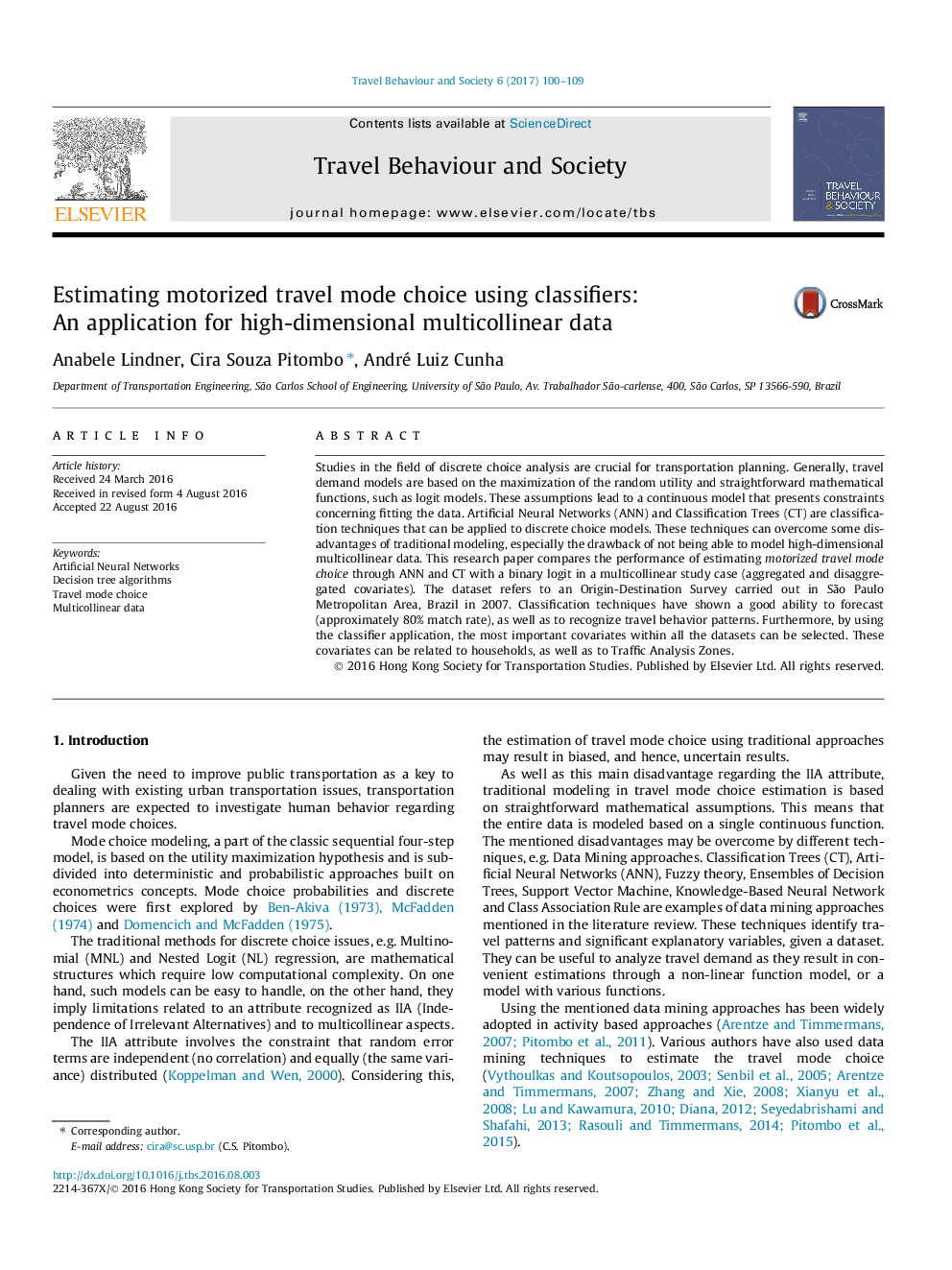| Article ID | Journal | Published Year | Pages | File Type |
|---|---|---|---|---|
| 6576379 | Travel Behaviour and Society | 2017 | 10 Pages |
Abstract
Studies in the field of discrete choice analysis are crucial for transportation planning. Generally, travel demand models are based on the maximization of the random utility and straightforward mathematical functions, such as logit models. These assumptions lead to a continuous model that presents constraints concerning fitting the data. Artificial Neural Networks (ANN) and Classification Trees (CT) are classification techniques that can be applied to discrete choice models. These techniques can overcome some disadvantages of traditional modeling, especially the drawback of not being able to model high-dimensional multicollinear data. This research paper compares the performance of estimating motorized travel mode choice through ANN and CT with a binary logit in a multicollinear study case (aggregated and disaggregated covariates). The dataset refers to an Origin-Destination Survey carried out in São Paulo Metropolitan Area, Brazil in 2007. Classification techniques have shown a good ability to forecast (approximately 80% match rate), as well as to recognize travel behavior patterns. Furthermore, by using the classifier application, the most important covariates within all the datasets can be selected. These covariates can be related to households, as well as to Traffic Analysis Zones.
Related Topics
Life Sciences
Environmental Science
Management, Monitoring, Policy and Law
Authors
Anabele Lindner, Cira Souza Pitombo, André Luiz Cunha,
